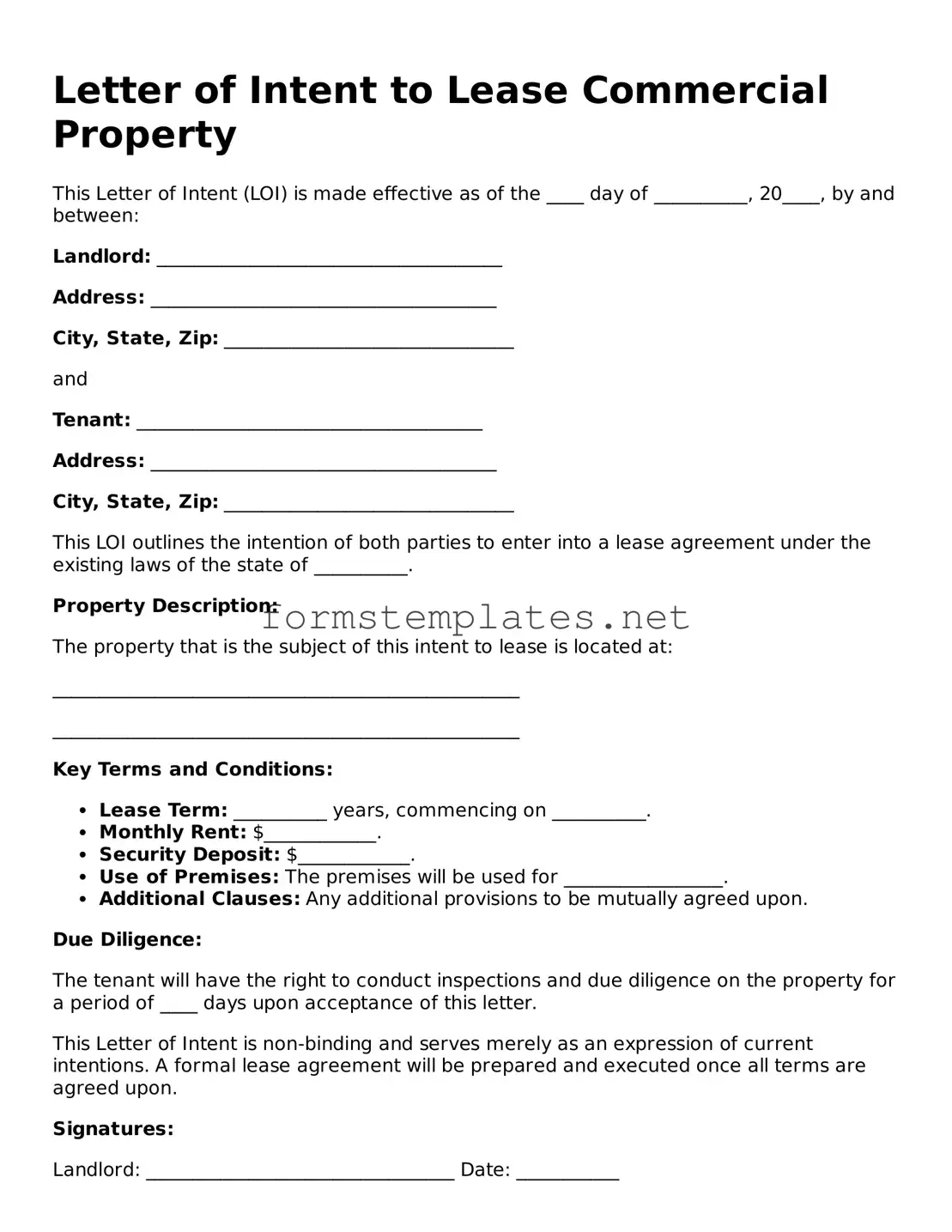Letter of Intent to Lease Commercial Property
This Letter of Intent (LOI) is made effective as of the ____ day of __________, 20____, by and between:
Landlord: _____________________________________
Address: _____________________________________
City, State, Zip: _______________________________
and
Tenant: _____________________________________
Address: _____________________________________
City, State, Zip: _______________________________
This LOI outlines the intention of both parties to enter into a lease agreement under the existing laws of the state of __________.
Property Description:
The property that is the subject of this intent to lease is located at:
__________________________________________________
__________________________________________________
Key Terms and Conditions:
- Lease Term: __________ years, commencing on __________.
- Monthly Rent: $____________.
- Security Deposit: $____________.
- Use of Premises: The premises will be used for _________________.
- Additional Clauses: Any additional provisions to be mutually agreed upon.
Due Diligence:
The tenant will have the right to conduct inspections and due diligence on the property for a period of ____ days upon acceptance of this letter.
This Letter of Intent is non-binding and serves merely as an expression of current intentions. A formal lease agreement will be prepared and executed once all terms are agreed upon.
Signatures:
Landlord: _________________________________ Date: ___________
Tenant: _________________________________ Date: ___________
This document may be governed by the laws of the state of __________.
